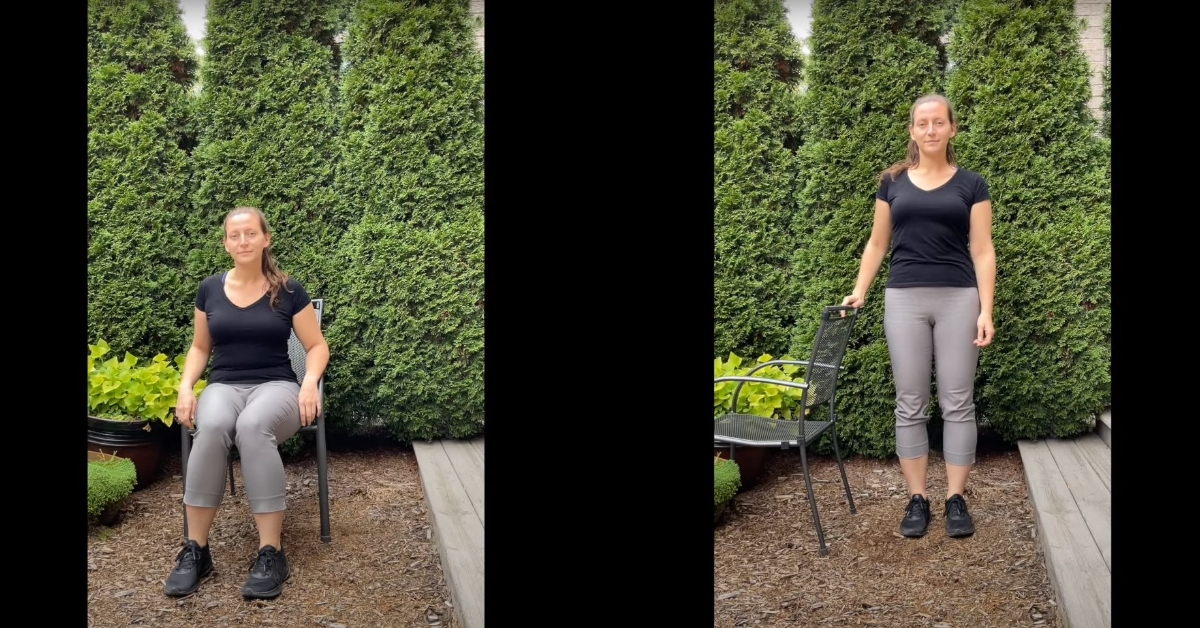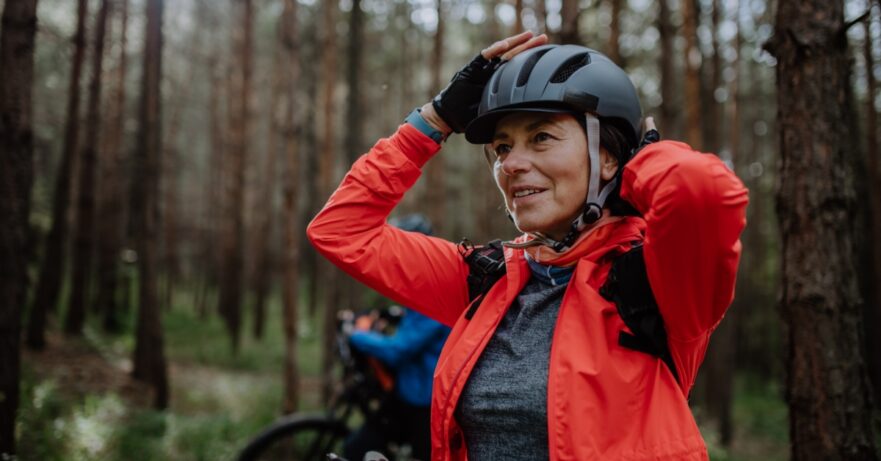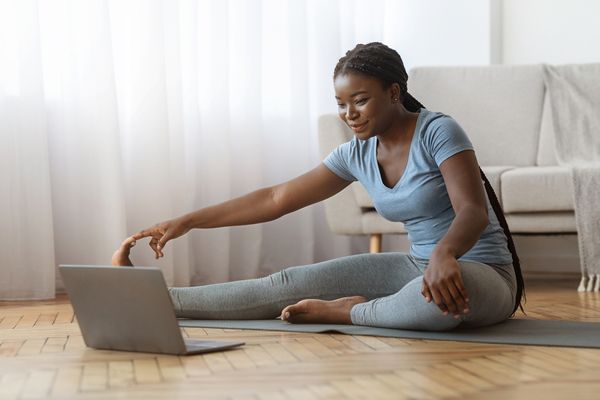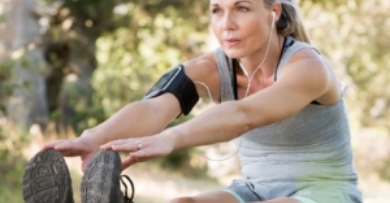We’re here to help you get well and stay well.
Find physiotherapy, massage, chiropractic care or acupuncture near you.
Find a Clinic
Virtual Care
Receive care from the comfort of your home
We continue to offer a range of services through Virtual Care, including Physiotherapy, Chiropractic Care, Occupational Therapy, Hand Therapy and more. Using secure, video conference technology, you can connect one-on-one with a pt Health clinician from the comfort of your own home. Learn more

Latest Blogs
December 18, 2023Occupational TherapyIs someone you know struggling with their mental health? It can be difficult, scary, and stressful when someone you care about is dealing with a mental health problem. You might be wondering how you can support them. We often know what to do when they get the flu or a cold, but what can be done for a mental health concern?
Well, let’s get down to the importance of mental health support for friends or family members. Families can be complicated, and connections will vary. Some people may have a strong bond with their families – spending quality time with each other every day. Other families however, may be more distant due to different circumstances and may not live close to each other or spend much time together.
When someone is struggling with a mental health problem, supporting them can make all the difference in their recovery, so it’s important that you show your love and support in any way you can. Often, talking about mental health can feel uncomfortable and is easier said them done. Supporting someone who care about may involve recognizing when they are feeling emotionally unwell, having caring and supportive conversations, and help when you can. This can also include offering to help them find a qualified mental health professional.
The holidays can be challenging
The holidays can sometimes bring on feelings of stress, anxiety and/or depression. Feeling financial burdens due to holiday expenses like travel, gifting or even hosting a gathering for example, can contribute to these feelings. Feeling overwhelmed can also take away from the time someone reserves for self-care and can increase the difficulty of balancing and organizing everyday responsibilities.
The holidays can also be a time of happiness and joy, but it’s important to recognize if you or someone you know is having a hard time. The signs aren’t always easy to spot, but here are some of the more common ones:
Feelings of hopelessness, worthlessness, guilt and / or sadness.
Increased frustration, anxiety, irritability or restlessness.
Loss of interest in most hobbies or activities.
Difficulty sleeping or oversleeping.
Tiredness, decreased appetite and lack of energy.
Fixation on past failures.
Trouble concentrating, focusing, or thinking.
6 tips that may help
Acknowledging your feelings, do not force yourself to be happy just because it’s the holiday season.
Mindfulness activities (meditation, reading, yoga practices) can help you focus on the present.
Staying active, like walking outside or putting some time away for an enjoyable activity.
Set realistic goals around the holiday season, don’t overextend yourself.
Seek help, talk to someone you trust about what is bothering you.
Remember you are NOT alone if you are having a hard time, the holidays can be difficult times for many. [...]
December 18, 2023Mental Health / Occupational TherapyThe holiday season is here and there can be a lot of planning for the season underway! It can be easy to lose track of the self-care activities in which we engage throughout the rest of the year that keep us healthy and happy. Here are some tips to consider to improve your self-care this holiday season:
1. Keep up the exercise
Often times during the holidays, people will skip their normal exercise routines including walking. This results in losing a very potent stress reliever. Rather than skipping workouts all together, I would encourage people to simply scale back if they find that they don’t feel like doing their regular workout routine.
Engaging in physical activity is something I recommend to every client I work with because it helps improve mood, concentration, and even sleep.
Research has shown that regular exercise (lasting at least 10 minutes per day) triggers the release of serotonin and dopamine in the brain (the same hormones that are targeted by anti-depressant medications), which can buffer against stress, anxiety, and depression. A morning walk is a powerful tool in your toolbox!
2. Respect and protect your sleep
Few things can have as much positive impact on physical and mental health as much as restorative sleep. A good sleep can help us feel recharged, energetic, and motivated. During the holidays, people may disrupt their sleep schedule to stay up later than usual. Here are three things that you can do to make sure your sleep is protected and as restful as possible:
Cut back on the caffeine and sugar for at least four hours before bed. These are stimulants that can keep you awake. Try a herbal tea or unsweetened carbonated water!
Skip the naps, especially the ones after large meals, so that you’re more tired at bedtime. If you do nap, limit the nap to no more than 30 minutes and in the earlier part of the day.
Pass on the goodies and leftovers in the fridge for at least three hours before bed so that you’re not kept awake by heartburn, indigestion, or sugar headaches.
3. Practice gratitude
Gratitude is another activity that can improve our reactions to stressful situations and to be more receptive to the good things around us. Research has demonstrated that even pondering the question, “what am I grateful for?” can increase levels of dopamine and serotonin in the brain, even when you can’t think of an answer.
Practicing gratitude can be as simple as reviewing what you are grateful for each day. This can be done mentally, or through the use of a simple gratitude journal (app-based or good old-fashioned paper-and-pencil) where you write down the actions, activities, people, or memories for which you are grateful
You can ask your friends, family, and children what they are grateful for and share in the gratitude of others.What a gift to share!
4. Make space for difficult feelings
The holidays can often be difficult times for many people. If you notice yourself repeating unhelpful habits, try to take a step back to make sense of what’s going on. The more you try to make sense of and confront your emotions, the less scary they can become. This makes it easier to sit with those difficult emotions.
5. Enjoy the present moment
One thing that can improve our enjoyment of the holidays is being present for the moments happening all around us. Noticing the small things right in front of us can allow us to feel grounded and present and improve our enjoyment of the holidays.
Do what you are doing when you are doing it! Notice the wandering mind, non-judgmentally and return to the present moment. A good deep breath can help us press the “reset button” on the moment.
Remember to take it easy and allow yourself the space to open up and enjoy each moment as it happens. Don’t forget to share some smiles and laughs over that video chat with family or friends, and savor every bite of that holiday meal.
If you are experiencing anxiety and are having a difficult time, we have occupational therapists, psychologists, psychotherapists, counsellors and social workers that can help.
To schedule an appointment, contact a pt Health clinic near you or book an appointment online.
This blog originally appeared on Lifemark.ca and was written by Rob Tyndall. [...]
November 22, 2023Physiotherapy / Vestibular RehabilitationIt’s always a good time to take a step back and review your home environment to lower your risk of injury. Though you can’t prevent ice and snow from coming this winter, you can be pro-active and take steps to prevent falls at home or around the house.
Numerous factors can increase your risk of falling. Conditions such as inactivity, heart problems, stroke, reduced hearing, vision or balance, muscle weakness, Parkinson’s, are some medical risks while improper footwear, poor lighting, loose rugs or clutter are environmental risks. That being said, a little pre-planning and some simple solutions can make a huge difference.
Safety tips for your home
One in three Canadian seniors experience a fall each year, and about half of these occur at home. Falls usually occur while doing a normal, daily task such as getting in and out of bed or getting into the bathtub.
Falls are the leading cause of injury and hospitalization among seniors and can result in physical injuries such as bruises, fractures or even a brain injury that significantly reduce quality of life.
Balance problems can increase the risk of experiencing a fall. Balance requires input from many areas: your visual system, the balance system of the inner ear as well as sensors of position and movement in your feet and legs, so if one or more of these systems are damaged as a result of injury or disease, the risk of experiencing a fall increases.
Home safety checklist
Remove loose carpets, area rugs and mats
Clean up spills when they occur
Remove clutter
Secure power cords away from floors
Choose anti-slip flooring, especially for stairs
Install and use handrails on stairs and in the bathroom
Ensure all areas are well-lit, especially stairs and doorways
Use footwear that fits (with non-slips soles) and avoid shoes without backs
Review the side-effects of medications with your physician or pharmacist, especially those that may lead to falls (e.g. dizziness)
Follow the recommendations of your medical professionals regarding the use of walkers or canes
Keep a cell phone with you or get a personal emergency response system
Staying safe around the house
You should also be preparing for balance challenges that will come along with the cold weather.
Here are three simple tips to prevent falls around the house this winter:
1 – Pick up some anti-slip traction aid like Lava Grip or Traction Sand from your local hardware store. Sprinkle the product on areas that will become icy when the temperature drops.
2 – Buy some heavy duty grips (i.e. ICEtrekkers) from your local sporting goods store to put on your boots for those winter walks. Just make sure to remove them before stepping on hard indoor surfaces, which they can slide on!
3 – Install motion sensor lights so that you’re not caught trying to navigate to your door in the dark as days grow shorter.
If you’re feeling unsteady or having some “close calls” with falls, you should talk to a healthcare professional. Vestibular therapists at Lifemark can evaluate contributing factors, measure your balance and determine your fall risk. They can then teach you techniques that have been proven to reduce fall risk and work with you to monitor progress.
To schedule an appointment, contact a pt Health clinic near you or book an appointment online.
This blog originally appeared on Lifemark.ca and was written by Sheelah Woodhouse, PT, BScPT, Vestibular Physiotherapist. [...]
November 22, 2023Occupational Therapy
As we approach the holiday season, consider these 7 suggestions to help you get ready for the holiday season:
7 suggestions to help you get ready for the holidays
1. Participate in a gift exchange
Instead of buying multiple gifts for multiple people, arrange a secret santa or yankee swap. Suggesting a gift exchange where family members or friend’s names are placed into a hat and each person picks one name to buy a gift for is a perfect way to keep spending simple. This way you can find that one perfect gift. Placing a spending limit on the cost of this gift is also a great way to keep expenses reasonable.
2. Shop early
This allows time for you to shop around for the perfect gift and find the best deals! You can also plan your meals for the holiday season and start purchasing non-perishables or frozen items ahead of time. Watching for sales and giving yourself time can save you time and money!
3. Pinterest is your friend
Nothing says “someone is special” than a unique, homemade holiday gift! There are a lot of fun (and affordable) holiday gift ideas that can be found on the internet. When you are out shopping, browse the internet before your purchase. There are often easy instructions to recreate that store bought idea.
4. Don’t be afraid to set a budget
It is important to know what your budget for the holiday season is, and to stay within it.
5. Make a plan and be organized
Make a list of all of the gifts that you are buying, and keep track of sales and coupons so that you can take advantage of deals as they arise. This can apply to home decor, party supplies, and holiday food. Using a spreadsheet can help you organize your gifts, receipts and finances effectively in one place. Keeping track of how much you spend on the holidays can assist you with budgeting for the following year.
6. Instead of a holiday party, enjoy a holiday hike
Hiking or participating in a winter activity is a great way to appreciate the fresh air and company of friends and family. A quick outdoor hike is often easier to plan than a big holiday party. Read our blog on winter activities for some fun suggestions.
7. Connect with others
A nice chat with a friend while drinking a cup of delicious hot chocolate is the perfect way to celebrate the holidays. If you’re still concerned about seeing a large group of people in person, it is also a great way to socialize virtually.
To schedule an appointment, contact a pt Health clinic near you or book an appointment online.
This blog originally appeared on Lifemark.ca and was written by Debra Vieth-Morse, B.Sc. O.T. Reg. (N.S.), Occupational Therapist. [...]
November 21, 2023Exercises / Physiotherapy / Stretches
Note: If you have not been physically active or have any questions, check with your primary healthcare provider before starting a new activity program. If you feel dizzy or unwell while exercising, stop and rest before continuing. If the situation does not improve, consult a healthcare professional before continuing.
An aerobic activity routine can have several benefits to your health and wellbeing. If you’re older, an aerobic activity routine can also help prevent falls. Falls are the most common injury in older Canadians and one of the leading causes of hospitalizations related to injuries in seniors. 85% of senior injury related complications are due to falls. Fear of falling can lead to decreased physical activity that can increase the risk of falls. The good news is you can increase your physical activity with aerobic activity.
What is aerobic activity?
Aerobic activity is any activity that gets your heart pumping and you breathing heavier. Some common examples include brisk walking, cycling, swimming and running or jogging. However, anything you do that gets your heart rate and breathing rate up is considered aerobic activity. Everyday examples are dancing, either alone or with a partner, gardening – raking leaves, shoveling snow, cross-country skiing, household chores, and vacuuming.
Keeping your body strong by using your muscles, (so you don’t lose them) while working on coordination and endurance with aerobic activity can help you prevent falls. The best part is you don’t need equipment and you can do aerobic activity indoors within your home if the weather conditions are not the best.
Why should we do aerobic activities?
Aerobic activity has many benefits. Here are some of them:
Physical benefits:
Increased lung, heart health and endurance in sedentary seniors
Decreased long-term inflammation in the body that is associated with chronic disease progression such as diabetes, arthritis and heart disease
Decreased blood pressure
Improved sleep
Mental wellness benefits:
Improved mood and mental health (decreased depression-like symptoms)
Thinking process benefits:
Improved working memory
Improved problem solving
You want to do aerobic activity, now what?
When doing these activities, it is important to have a warm-up to get your muscles ready for work to prevent injuries and a cool down to support recovery of your heart and lungs. A warm-up can be as simple as a 2-5-minute walk or march (see the example in the video or image below) A cool-down should include deep breathing to promote relaxation and stretches of major muscle groups (see the stretch examples in the video or image below). When engaging in aerobic activities it is important to consider safety.
The video gives you two options for performing activities; sitting and standing. Feel free to alternate between them as needed and as you are comfortable. Make sure to have a clutter-free space to do your exercises and you should use the back of a chair or a steady counter or wall to help with balance as you exercise.
Example warm-up
Total time: 2 minutes
Slowly march on the spot for 30 seconds
March slowly while lifting your arms up one at a time for 30 seconds
March while lifting your arms out to the side one at a time for 30 seconds
Alternate fast and slow marching in 5 second intervals for 30 seconds
Example cool down
Total time: 2 minutes
Stretches (hold each for 15-30 seconds), take deep breaths to help with relaxation
Arm across chest stretch for 15s on each arm
Triceps stretch for 15 seconds on each arm
Quad stretch for 15 seconds on each leg
Sitting hamstring stretch for 15 seconds on each leg
Exercise guidelines
When starting an aerobic activity program, consider the FITT principle; Frequency, Intensity, Type and Time. In terms of frequency, you should start slow and do aerobic activity 2-3 times a week, working your way up to 5-7 times a week. When exercising, you want to work at an intensity where you can talk (carry on a bit of a conversation). If you can sing you can work a little harder and if you are gasping for breath you should tone down your effort a bit.
You can also measure how hard you think you are working with the modified borg scale. Types of aerobic activities can be anything that get your heart pumping and your breathing rate up – be creative! The time spent doing aerobic activity will vary. Canadian guidelines for physical activity recommend that adults aim for 150 minutes of total of moderate to vigorous physical activity a week. You can start slowly with a 10 minute session and gradually build up to 25 or 20 or 30 minute sessions. Remember slow progress is still progress. In this case, slow consistent progress is what you want to aim for.
If you have any specific concerns or questions physiotherapists and kinesiologists can help. As experts in movement, they are knowledgeable about exercising and can help with any modifications or concerns about exercising with injuries.
To schedule an appointment, contact a pt Health clinic near you or book an appointment online.
This blog originally appeared on Lifemark.ca and was written by Ann Szczepanski, a Physiotherapy student from the University of Toronto. [...]
October 19, 2023concussion / Occupational TherapyLifemark registered physiotherapists Janine Ankenmann and Cregg Webber discussed how to identify concussions, myths around management, and steps to return to learning, home or work activities in a free webinar.
Over half a million Canadians sustain one or more concussions each year, the majority of which result from falls and motor vehicle accidents (not sport). Resulting from a direct hit to the head or jolting of any part of the body that causes the head to move back and forth rapidly, a concussion can greatly affect a person’s ability to engage in everyday activities, including school, work and home.
Below are five key takeaways from this session. To learn more please view the webinar above.
1. No two concussions are the same.
Concussions take on a variety of forms and can differ from injury to injury and person to person. Symptoms can be grouped into buckets based on the body system or function involved such as cognitive function, psychological and emotional conditions, sleep dysfunction, neck-related, vision-related, vestibular and balance challenges, and autonomic nervous system involvement, which includes blood pressure, and heart rate and breathing changes among several other subconscious body functions. Some people may experience drastic changes in emotions or moods or feel like they may have a breakdown and don’t know why. Others may feel off balance, dizzy, or have difficulty driving. Concussions can cause a variety of symptoms which differ in type and severity for everyone. A thorough assessment of the individual is necessary to best guide treatment, education, and modifications for activity.
2. Tools like the CRT 6 can help you identify whether a concussion has happened, what symptoms to watch out for, and when to call an ambulance.
The Concussion Recognition Tool 6 (CRT 6) was developed as an awareness tool that anyone can use for identification of concussions in children, adolescents, and adults, and immediate management of the injury. The CRT 6 red flag symptoms are observable signs after an injury that indicate immediate referral for urgent medical care. The tool also highlights visual clues that may suggest a concussion has happened, and questions to ask an injured individual to assess their awareness.
3. Early assessment with a knowledgeable health care provider is a predictor of good outcomes.
It is important to get assessed right away after an injury or if a concussion is suspected. The first 48 hours (about two days) after injury is when the brain is in its most vulnerable state. Early assessment and treatment provide education on how to safely engage the brain while modifying activity. Early care from a Lifemark clinician may look like introducing manual therapies dependent on symptom types or modifying activities of daily living to reduce the sense of overwhelm. By dispelling any fears around the injury, proactive assessment and intervention is the best way to promote recovery by setting an individual up on the right path to manage their symptoms and achieve health goals.
4. Safe recovery involves gradual increases in activity as symptoms improve.
Whether returning to school, work, or other daily activities, small and gradual increments of pre-injury activities should be introduced. For instance, return-to-learn may initially involve just listening, taking regular breaks, and spending time with others to avoid isolation. Return-to-work may involve working part time and gradually increasing work related tasks and in-office days. These activities may cause some aggravation of symptoms, but they shouldn’t worsen by more than 2 points on a 10-point scale and any increases of symptoms should not last more than 1 hour.
5. Length of recovery depends on many factors.
While the vast majority of people experience a resolution of their symptoms within 30 days following a concussion, the actual time it takes to recover depends on a variety of factors. The presence of any pre-existing conditions such as migraines, or a learning disability, may lengthen recovery time. Increasing age also increases recovery time. Adolescents heal faster than people in their 20-30s, who heal faster than those who are over the age of 65.
The greatest control an individual has over their own concussion recovery is an active involvement in their recovery journey. By sticking to the treatment plan, modifying tasks while monitoring symptoms, and gradually reintroducing activities, patients can support and achieve their health goals.
Predictors of a positive recovery from a concussion injury include early recognition, immediate removal from activity, early access to care, appropriate and timely education, and time limited (48 hours) active rest followed by gradual resumption of pre-injury activity.
If you or a loved one has sustained a concussion and would benefit from knowledgeable care, check out our locations page to find a clinic near you or book online with a concussion-focused clinician here.
This blog originally appeared on Lifemark.ca and was written by Krista McIntyre, Reg. PT., M.Sc.PT., H.B.K., National Director of Program Development, Specialty Services.
. [...]
September 25, 2023Physiotherapy / Vestibular RehabilitationThe vestibular system – it’s something most people have never heard of, we all rely on it heavily, and about a third of us will have problems with it at some point.
This system consists of the organ in the inner ear which detects head position and movement, as well as the parts of the brain that process that information.
Our ability to perceive head movement, stay upright, and see clearly when in motion is all thanks to the vestibular system, so you can imagine the trouble caused when it’s not working properly!
Your best bet for treating issues with the vestibular system is Vestibular Rehabilitation. This therapy is a research-based approach where individualized techniques are used to help the brain compensate for problems in the vestibular system.
This treatment also uses maneuvers that are done to correct mechanical dysfunctions in the vestibular part of the inner ear.
Vestibular rehab requires post-grad training, and is mainly performed by physiotherapists, however occupational therapists or audiologists can provide it as well.
Vestibular problems can take many forms
Vestibular disorders can come from pathologies in any area of the complex vestibular system.
Disorders can arise “out of the blue” or stem from factors such as trauma (car accidents, falls, etc), inner ear infections, aging, medications, tumors or other brain-related issues, or as symptoms of other diseases/conditions.
Symptoms can include dizziness, vertigo, unsteadiness or falls, blurry vision while moving, motion sensitivity, and nausea or vomiting.
It can also create other complications, like poor concentration, decreased activity, movement restriction, reclusiveness, anxiety, and depression.
What to expect during vestibular rehabilitation
A proper vestibular rehabilitation assessment is lengthy, but it’s thorough. You can expect:
– Discussion about the history and nature of your symptoms
– Screening for more serious causes of dizziness or unsteadiness
– Evaluation of eye movements assisted by infrared video-analysis
– Testing for sensitivity to motion or position change
– Evaluation of stationary and moving balance
– Testing other areas that could be contributing, like neck problems or blood-pressure
Following the assessment, a wide variety of treatment options are available. These can include eye exercises, training to reduce sensitivity, balance challenges, and strategies for dealing with cognitive and psychological impacts.
In cases of Benign Paroxysmal Positional Vertigo (BPPV – the most common cause of vertigo), canalith repositioning maneuvers can be used. The results are often dramatic.
The balance retraining done as part of vestibular rehab is also effective for clients who don’t necessarily have a vestibular problem, but have orthopaedic, sensory, or other brain-related disorders affecting their equilibrium.
Why is vestibular rehabilitation still so unknown?
For those who head to their Doctor with dizziness and balance issues, it can be challenging to get to the root cause. Many Doctors take a “wait and see” approach or say there isn’t anything to be done.
Those with specialized training in vestibular rehabilitation know that there’s more to it.
It may seem reasonable to simply avoid the things that trigger dizziness, but this can slow down recovery.
With plenty of research, clinical practice guidelines, and position statements from specialists, it’s clear that Vestibular Rehabilitation is a valid and beneficial treatment, but many aren’t being informed of it.
Now that you know what the vestibular system is, you can appreciate it more and be aware of when issues start to present themselves. Vestibular rehabilitation should be your go-to solution if you start to experience the symptoms described here.
To schedule an appointment, contact a pt Health clinic near you or book an appointment online.
This blog originally appeared on Lifemark.ca and was written by Sheelah Woodhouse, PT, BScPT, Vestibular Physiotherapist
. [...]
August 23, 2023PhysiotherapyIt’s that time of year again, when students of all ages get back to school, and a good time for the rest of us to review our day-to-day habits. As workloads increase, so do the weight of backpacks, totes, or messenger bags carried daily. Many students and workers alike may develop or aggravate back, neck, shoulder or arm pain due to the daily transporting of heavy packs and/or bags.
Are you wearing your bag correctly?
Poor form while carrying a heavy bag such as forward head posture or upper back hunching may contribute to pain in your shoulders, neck, back, or tingling in the arms and hands.
Here are 4 key tips for lifting and carrying a bag that can help to reduce strain on your body.
1. Keep it light. Studies suggest a backpack should not exceed 10-15% of the wearer’s body weight. Limit the need to carry items that may make your bag heavier than 15% of your body weight or opt for a hand-pulled bag on wheels. Lighten your load by leaving unnecessary items/books at home or in a locker when not in use.
2. Place heavier items close to your body. To help prevent injuries, distribute the weight of the contents of your bag by placing heavier items on the bottom or part closest to your body, while storing lighter objects in the outer compartments.
3. Distribute load evenly. Uneven distribution of weight can cause stress and strain on the body. For a more balanced bag, select one with wide and padded shoulder straps that can be adjusted and use both shoulders to carry the pack so that it sits symmetrically above the buttocks. A hip or cross-chest strap, if your bag is equipped with one, can help distribute the load across even more areas of the body.
4. Use your legs to lift. Flinging a bag over your shoulders adds stress from lifting and twisting to the neck and spine. Use your legs to lift the weight off an elevated surface such as a table in a slow and controlled way. Keep the load as close to your body as you can and avoid twisting.
Wondering if your bag is causing you strain and pain? A ptHealth clinician can help by conducting a focused assessment and providing you with a treatment plan to help you reach your goals. Check out locations page to find a ptHealth clinic near you or book online to schedule an appointment
This blog originally appeared on Lifemark.ca and was written by Krista McIntyre, Physiotherapist and National Director of Program Development, Specialty Services.
[...]
August 23, 2023PhysiotherapyNote: The exercises and/or stretches in this blog are not intended to replace the advice of your clinician. Starting a new exercise, stretch, movement, or activity may result in some expected stiffness and soreness. If you are unsure, please speak to your clinician before attempting any of the suggestions below.
Looking for inspiration to help you get started on your fitness goals? It’s never too late. Here’s a friendly reminder that you don’t need fancy equipment to stay in shape. Keep reading to learn about five fun tips to help you stay active indoors.
1. Morning and night full-body stretching routine
Stretching is beneficial for everybody. When done in the morning, it can help relieve some of the tension that builds in your muscles while you sleep, and it prepares your mind and body for the rest of the day. With the increased amount of time we spend sitting in today’s world, certain muscles can become very tense. This can lead to poor posture and even injuries. Stretching at night can help alleviate the tension in these muscles, and can relax the body, setting yourself up for a good night’s sleep.
2. Yoga
Yoga is an excellent form of exercise, as it incorporates strength, balance, flexibility, and concentration. What is also great about yoga is that it’s for everyone – from beginners to the more experienced! Like stretching, yoga is great for reducing mental and physical stress throughout the body, making it beneficial to do any time of the day.
With so many different styles of yoga available to you, you’re able to select the kind of workout that is suitable for what your body needs on a particular day. This means you can really challenge your body while also keeping the workout enjoyable and fresh by trying new styles. You never know what you’ll like best until you try it out.
3. Resistance training workouts
Save the trip to the gym – you can add muscle in the comfort of your home! It’s a misconception that you need dumbbells and machines to have a successful workout. Bodyweight exercises can be very beneficial for improving strength and can be challenging for all fitness levels. Resistance training increases the strength of your muscles and bones, which can help improve posture and protect the body from injuries.
A full-body resistance training workout is optimal, as it strengthens all the body’s major muscle groups and requires more energy. This results in greater satisfaction post-workout. Resistance bands are a low-cost option that could be used in addition to bodyweight exercises, as they allow you to target specific muscle groups that may be difficult to hit with just your weight.
4. High-Intensity Interval Training (HIIT)
If you have limited time to exercise, this could be a great option for you. High-Intensity Interval Training (HIIT) is a type of exercise that targets the cardiovascular system and involves repeated short bouts of high-intensity efforts followed by varied recovery times. HIIT is very beneficial because it requires your body to utilize high amounts of energy in a short period of time; can help improve cardiovascular factors such as oxygen consumption, heart rate, and blood pressure; and, lastly, can even lead to improvements in muscular strength.
The exercise choices for HIIT workouts are almost endless, making it challenging and entertaining for any fitness level. It is important to note that this form of training can put a lot of strain on the body. If you do not have an appropriate fitness level, training at a high intensity too often can lead to injuries. Instead, less intense options to improve your cardiovascular fitness include walking around the house, doing stairs, or even a less intense form of circuit training. Learn more about HIIT.
5. Dancing
Last on the list might be the most fun way to exercise – dancing! Dancing is another workout that not only targets the cardiovascular system, but helps to improve your balance, strength, and challenges your brain! Dancing is great for everyone because there are many different styles of dance that each place a different demand on the body. Or, you can pick your favourite songs and move however you want!
Some helpful suggestions
Try to do something every day to build a routine
It has been found that even doing a small amount of exercise has a much greater effect than doing nothing at all. Doing as little as 20-30 minutes of exercise a day can have great benefits on your health.
Pick activities you enjoy
It will be much easier to stick to a consistent routine if you’re having fun while doing it. Test these suggestions out and see which ones you like the most!
Start easy and progress as time goes on
If you’re new to physical activity, it is best to start with less challenging exercises until your body adapts to it. Over time, make the activities more difficult by increasing time, increasing the number of sets/reps, or choosing more difficult variations of the activities.
Invite your friends or family to join you
Invite your friends and family to exercise with you! This not only holds you both more accountable but also provides some friendly competition that can keep you motivated.
Whichever activities you choose to do; the most important thing is to make sure you’re safe while doing them.
When the weather is nice outside, try your best to do outdoor activities as well to get the benefits of the fresh air and vitamin D. If you would like more information on outdoor activities during the winter, check out our blog on 8 fun ways you can stay active this winter.
To schedule an appointment, contact a pt Health clinic near you or book an appointment online.
This blog originally appeared on Lifemark.ca and was written by Nicole Vaillancourt, Clinic Director, Physiotherapist. [...]
August 23, 2023Pain Relief / Physiotherapy??
Plantar fasciitis, often thought of as heel pain, is one of the most common causes of foot pain and will affect nearly 10% of all people at some point in their lives. While most people experience pain in the heel, others can have discomfort under the arch of the foot. Pain from plantar fasciitis can prevent you from running errands, going for walks with family, or even performing full duties at work.
Without treatment, foot pain can be challenging to overcome.
Lifemark’s Heather Cirone, physiotherapist and certified pedorthist and Nirali Mehta, physiotherapist, recently discussed plantar fasciitis, factors that may lead to foot pain, and how intervention can help reduce pain, improve daily function, and prevent recurrence in a free webinar.
Below are 5 key takeaways from this session. To learn more please view the webinar above.
1. The plantar fascia is like the string on an archery bow, applying too much strain can cause inflammation and pain.
The plantar fascia is a thick band of tissue that connects the heel of the foot to the toe. Similar in structure to an archery bow, the bones of your foot make up the bow and the plantar fascia is the string connecting both ends of the bow together. The plantar fascia’s primary role is to support the arch of the foot. Adding pressure downwards onto the foot (bow) will cause the plantar fascia (string) to tighten as it gets stretched to maximal length along the bottom of your foot. Repeated or excessive loading of the plantar fascia can cause microtears which can lead to inflammation and pain. Similar to the string on the bow, the plantar fascia’s function also includes acting like a spring-type mechanism where it helps the foot push off or move the body forward during activities like walking, running, or jumping.
2. Reduce your risk of developing plantar fasciitis by addressing lifestyle factors.
As we age, the plantar fascia becomes less elastic and adaptable, increasing the risk of injury. Despite this, there are factors we can modify to reduce our risk of developing plantar fasciitis. Addressing controllable factors such as weakness, muscle tightness or imbalance of other body structures like the ankle, knee, calf, hip, or core can reduce your risk of developing foot pain. Extra strain on the plantar fascia from increased body size, being on your feet all day, or choice of footwear, are additional factors that can be modified to help reduce risk.
3. By modifying your activity, you can keep doing what you love.
Rather than stopping all activities or taking a full rest approach, it is often recommended that individuals with plantar fasciitis continue movement to decrease or change the load on the plantar fascia. Small changes such as walking instead of running or taking breaks if you’re on your feet for a long while can make a big difference when dealing with plantar fasciitis. You may also consider trying a new or different, lower-impact activity while you recover. Inactivity and immobilization can worsen the condition and hinder recovery.
4. At-home strategies can help reduce pain and facilitate healing. Try different techniques to see which works for you.
Rotating between applying ice and heat may help promote healing by increasing blood flow in the area. One method is to apply heat for 30 seconds and cold* for 10 seconds and repeat the cycle a few times. Rolling a frozen water bottle or a spike ball with the bottom of your foot can help reduce pain by reducing tension and inflammation in the area. A key strategy in the management of plantar fasciitis is the use of supportive footwear. It is generally best to choose supportive shoes with a low-to-moderate heel, thick soles, and good arch support with extra cushioning. Limit the use of flats or barefoot walking as this puts higher levels of strain on the plantar fascia. To help promote and speed up recovery, the keys are to stretch the foot to lengthen the plantar fascia and control pain and irritation.
5. Healthcare professionals like physiotherapists can help when self-management isn’t enough.
A healthcare professional such as a physiotherapist or chiropractor conducts a full, individualized assessment, examining how surrounding body structures and/or activities are contributing to your condition. They will work with you to determine the root cause(s) of your issues and provide you with an individualized treatment plan to help resolve your pain and prevent recurrence. Treatment strategies may include manual therapy, a customized exercise plan, acupuncture and shockwave therapy. Taping is another treatment strategy that involves wearing special tape around the foot and ankle to help offload the plantar fascia and provide support for the arch of the foot. This may help to reduce irritation of your condition while keeping you active and providing pain relief.
Experiencing pain in your foot? See how a ptHealth clinician can help.
* Some individuals may lack temperature sensitivity. Prior to doing this technique, please apply a cloth between your skin and the frozen or hot item and consult with your healthcare provider if this is safe for you. Never apply ice directly to the skin, always use a cloth or other barrier.
This blog originally appeared on Lifemark.ca and was written by Krista McIntyre, Physiotherapist and National Director of Program Development, Specialty Services. [...]









